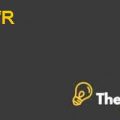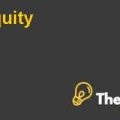
Vision
To identify the best interests of consumers we endeavor their demand by enhancing the quality of the product; keeping in view the social standards required to make it the finest product in the industry.
Corporate and marketing strategy
Asahi faced severe turbulence in the competitor battle but later they made remarkable corrections and became the market leaders in a super dry category. There were certain steps that their CEO made to ensure the revival of the firm.
For instance, the revival of the management style in the organization boosted a significance increase in the overall performance. There were two eras that were very significant for the Asahi Breweries. The Murai era marked the introduction of decentralization in many aspects of the organization. Increase involvement of the managers from all tiers in the decision making process with an intention to ignite the middle management to come up with different innovative processes and ideas. He also created two teams to monitor the activities of quality and corporate image. The corporate image team was able to provide the CEO with a 3 pointer problem that was taken care of instantaneously by introducing the all new Asahi Draft designed to match his taste of contemporary beer drinkers.
Following the Murai era, which faced sliding results in the market share and sales, the Higuchi Era arrived. Higuchi in contrast with Murai was more incline towards autocratic or top-down style of management. For Higuchi, the decision making and the number problem for the organization is a concern only for the top management. He made significant changes to the operations of the organization such as the increase in the advertisement product, instant launch of their new Asahi draft beer and the recalling of the production that carried the old labels of the organization. He increased the expenditure on advertisements and product quality significantly that resulted in a fruitful outcome.
Asahi’s Current Strategies
The organization has positioned itself as a producer having a long history of manufacturing quality products. It was determined that the consumer taste and preferences were changing after the post war era, therefore: Asahi responded to this particular situation by adopting a new product development strategy. They created Asahi draft and then the super dry product that became a leader in sales for the conservative segment of the consumers. This decision relied on the information from researches that the post war era marked a significance change in the taste preferences of the consumers. This compelled Higuchi to adopt a risky strategy and incline away from the industry tradition. Higuchi adopted three main strategic decisions that were the reason of his success. These were as follows:
- Remove all old products from circulation at a loss to show commitment to the new product.
- Change raw material (malt) suppliers to German suppliers in order to improve quality at an increased expense.
- Spend as much money on advertising and promotion until operating profit equaled zero.
The improvement in the quality and promotional activities propelled the distributors to push the Asahi products that yielded a 9.7 percent increase in the sales as compared to previous years. This forced the CEO to further strengthen its position by the introduction of new beer that he rejected in an executive meeting due to the reason that it will have cannibalization effect on its latest offering. After the super dry launch, Higuchi proposed an investment of 230 billion yen for the next two years for the organization’s expansion strategy.
Market segment and Target market
In Japan, lager beer was traditionally the choice of most consumers that was served by the offerings of Kirin. But this segment was on a decaying process as the generation was slowly shifting and their preferences changed simultaneously. This provided Asahi the opportunity to penetrate in the market further and snatch the market share from Kirin by creating a beer niche for itself, keeping in note the fact that the lager beer segment was not obsolete as shown in the data that Kirin dominated the segment by 42.2 percent capitalization. On the other hand, Asahi was performing up to the CEO’s expectation by growing steadily at 15.4 percent of the dry beer segment capitalization.
SWOT analysis
Strengths
Asahi had the advantage of moving first in the super dry beer segment. This gave them a significant head start as compared to competitors. The revenues generated through this strategy were substantial and made the firm financially competitive. At this point, the organization was catering all the beer market segments in Japan. One of the strengths of the organization was the motivation of employees that led to the success of the firm.
Weakness
The organization was the market leader in the super beer segment but was unable to penetrate the market share of the lager beer segment that Kirin was holding. This product was soon becoming a liability on the diversified portfolio that Asahi was offering. The organization had an ineffective marketing personnel’s and the supply chain.......................
This is just a sample partial case solution. Please place the order on the website to order your own originally done case solution.













